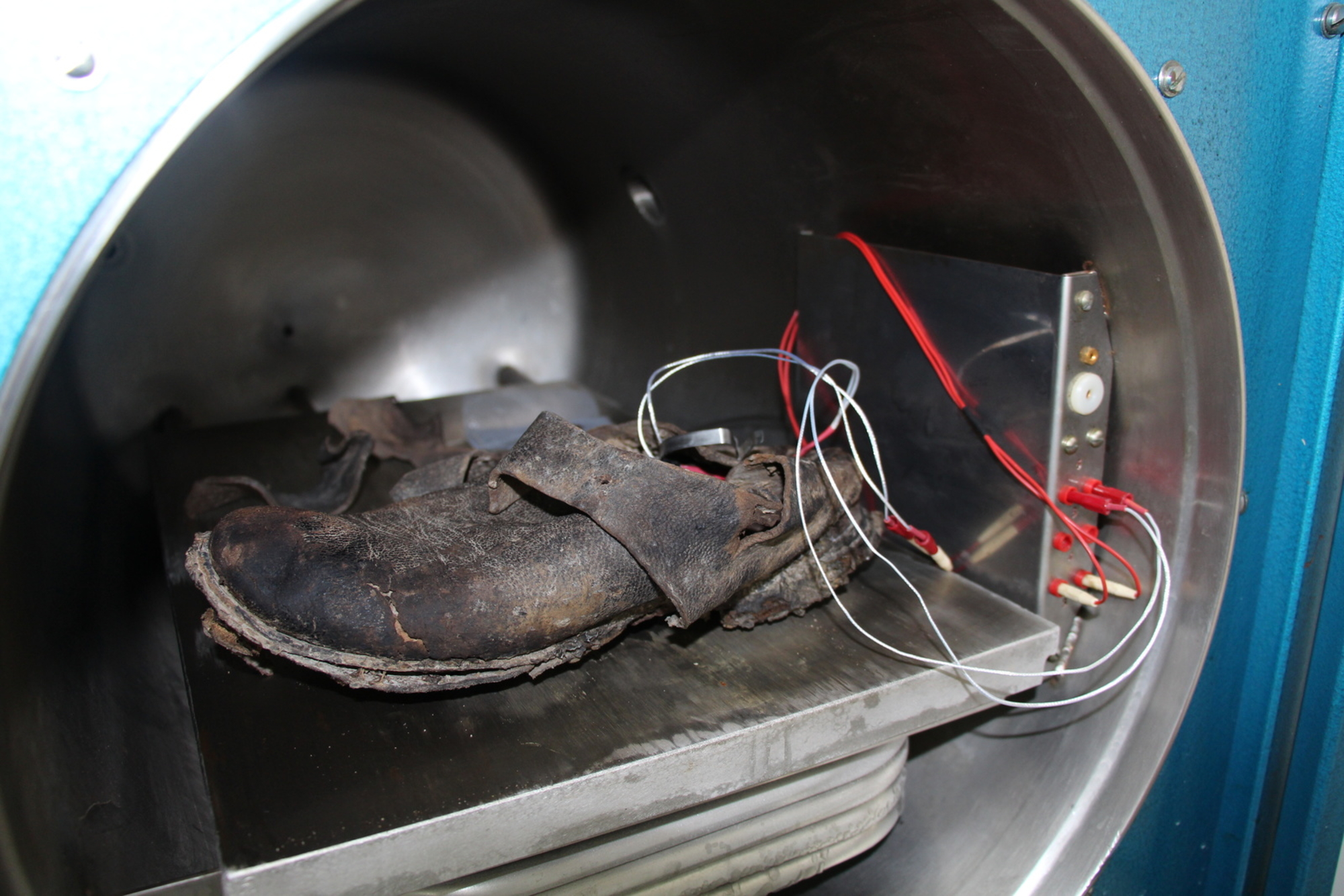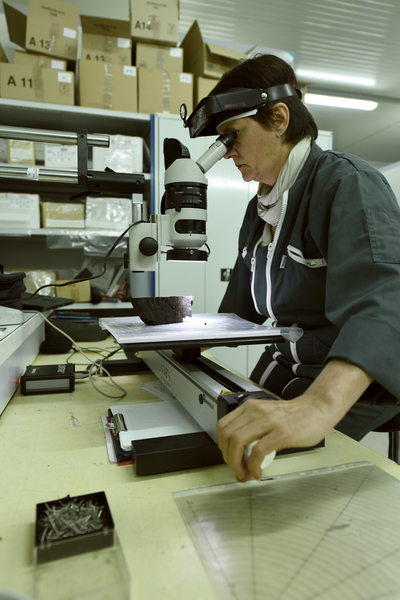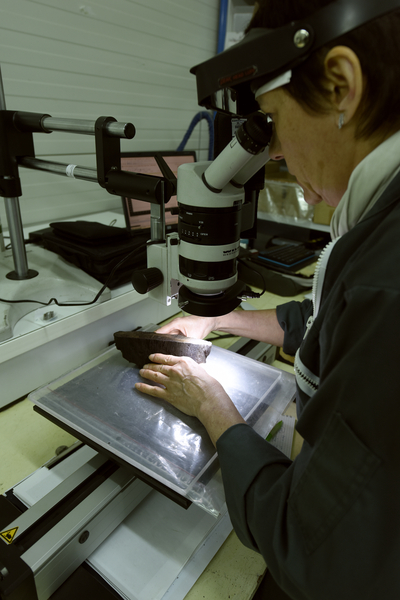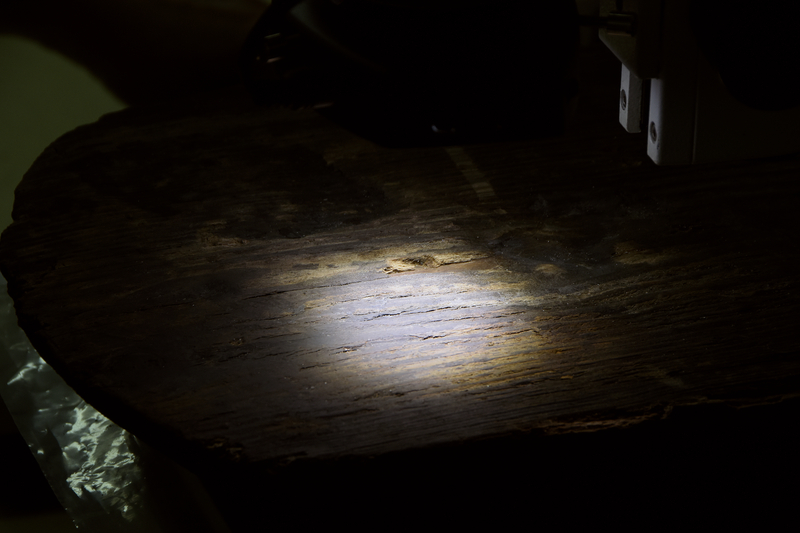
- Home
- A great scientific adventure
- From seabed to museum display
- Wrecks in the Lab
Artefacts recovered from wrecks really are a sickly bunch, requiring palliative treatments, surgical procedures, impregnation processes, radiation therapies, electrolysis… Nevertheless they teach the archaeologists who care for them a great deal about our past.
Dendrochronology, or how to read between the rings
Dendrochronology is the scientific discipline of studying growth rings in trees. The term itself is a compound of the Greek words dendron (tree), chronos (time) and logos (study). When applied to underwater archaeology, dendrochronology allows us to peer into the past. In quantitative terms, it enables us to date wrecks and to determine where the timber came from. More detailed, qualitative studies of archaeological wood can pinpoint climatic events, identify forest landscapes and provide more information on the development of naval construction. For example, studies on the Granville privateer Aimable Grenot (1749) brought to light special tree-pruning techniques.
Catherine Lavier looking through a microscope.
A dendroarchaeologist is a wood specialist who helps archaeologists on excavation sites and museum investigative and display conservators to evaluate objects and works of art, and then study the data collected in the laboratory. They work on national and international missions, attend meetings and discuss ideas to enhance our knowledge of the practices and craft of woodworkers through the study of this historical material.
© Corinne Prevost/DRASSM
Catherine Lavier studying the rings of a wood sample retrieved from a wreck.
© Corinne Prevost/DRASSM
Close-up of the wood being examined.
© Corinne Prevost/DRASSM
Medical technology in the service of archaeology
Medical radiography helps archaeologists determine the contours of an artefact concealed in gangue. Scanning an artefact provides information that allows us to estimate its dimensions using 3D rendering software. Determining the shape and density of an archaeological object is essential for its subsequent analysis, and it also allows us to choose the right conservation methods for preserving it.









